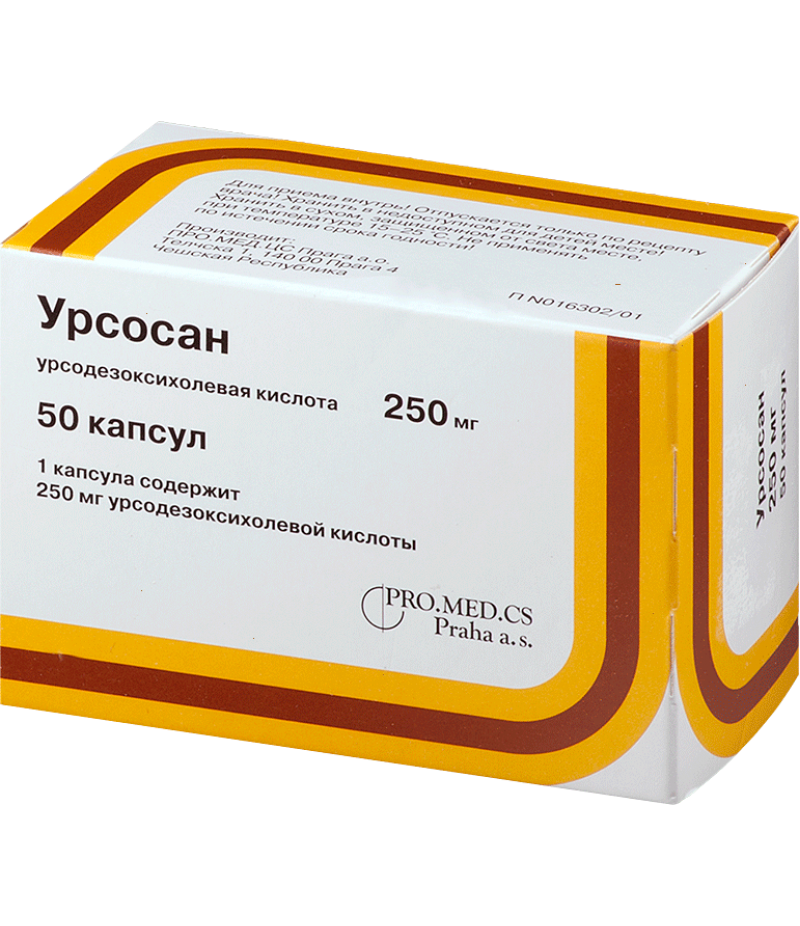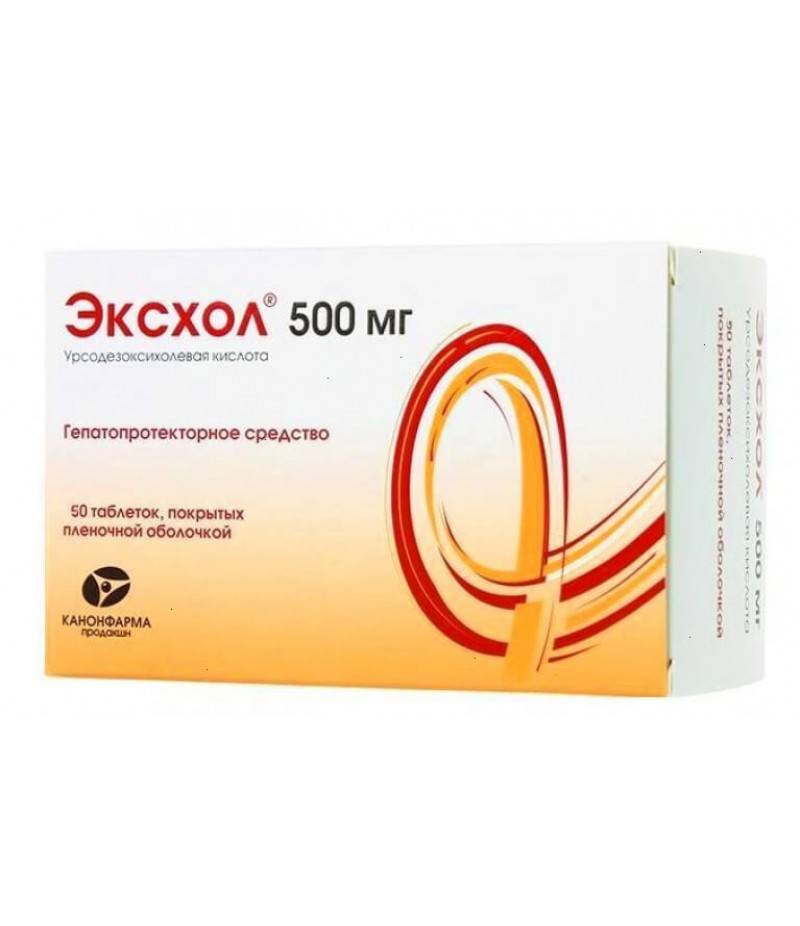Grinterol caps 250mg #100
- $49.32
- 2 or more $48.50
- 3 or more $47.70
- Availability:In Stock
Grinterol user manualYou can buy Grinterol on this pageForm of release, composition and packagingCapsules hard gelatinous, №0, body and lid of white color; the contents of the capsules are white or almost white powder.1 caps.ursod..
Tags: caps
Grinterol user manual
You can buy Grinterol on this page
Form of release, composition and packaging
Capsules hard gelatinous, №0, body and lid of white color; the contents of the capsules are white or almost white powder.
1 caps.
ursodeoxycholic acid 250 mg
Excipients: corn starch - 73 mg, silicon dioxide - 5 mg, magnesium stearate - 2 mg.
The composition of the shell capsule (body and lid): titanium dioxide (E 171) - 2%, gelatin - up to 100%.
pharmachologic effect
Hepatoprotective agent, also has choleretic, cholelitholytic, hypolipidemic, hypocholesterolemic and some immunomodulating action.
It is built into the membrane of the hepatocyte, stabilizes its structure and protects the hepatocyte from damaging effects of bile salts, thus reducing their cytotoxic effect. With cholestasis activates Ca2 + -dependent alpha protease and stimulates exocytosis, reduces the concentration of toxic bile acids (including chenodeoxycholic, lithocholic, deoxycholic), whose concentrations in patients with chronic liver diseases are increased.
Competitively reduces the absorption of lipophilic bile acids in the intestine, increases their "fractional" turnover with enterohepatic circulation, induces choleresis, stimulates bile passage and the excretion of toxic bile acids through the intestine. It screens nonpolar bile acids (chenodeoxycholic), due to which mixed (non-toxic) micelles are formed.
Reduces the saturation of bile with cholesterol by reducing the synthesis and secretion of cholesterol in the liver and inhibiting its absorption in the intestine.
Increases the solubility of cholesterol in the bile excretory system, stimulates the formation and secretion of bile. It reduces the lithogenicity of bile, increases the concentration of bile acids in it, causes an increase in gastric and pancreatic secretion, increases lipase activity, and has a hypoglycemic effect. It causes partial or complete dissolution of cholesterol gallstones when applied orally, reduces the saturation of bile with cholesterol, which contributes to its mobilization from gallstones.
Grinterol has an immunomodulatory effect, affects immunological reactions in the liver: reduces the expression of certain histocompatibility antigens - HLA-1 on the membrane of hepatocytes and HLA-2 on cholangiocytes, affects the number of T-lymphocytes, the formation of interleukin 2, reduces the number of eosinophils, suppresses immunocompetent Ig (in first of all IgM).
Pharmacokinetics
Suction and distribution
Absorption from the small intestine is high (about 90%). Penetrates through the placental barrier. Cmax when administered 50 mg after 30, 60, 90 minutes - 3.8; 5.5; 3.7 mmol / l, respectively. The time to reach Cmax is 1-3 hours. The binding with plasma proteins is high.
Metabolism and excretion
Metabolised in the liver (clearance at the "first passage" through the liver) into taurine and glycine conjugates, which are secreted into bile. It is deduced on 50-70% through an intestine. A small amount of unsweetened ursodeoxycholic acid enters the large intestine, where it undergoes cleavage by bacteria (7-dehydroxylation); the resulting lithocholic acid is partially absorbed from the colon, but sulfated in the liver and rapidly excreted as a sulfolithocholylglycine or sulfolitocholyltaurine conjugate.
Indications for Grinterol
- Dissolution of small and medium cholesterol stones with a functioning gallbladder;
- Biliary reflux-gastritis;
- primary biliary cirrhosis in the absence of signs of decompensation (symptomatic therapy);
- chronic hepatitis of various genesis;
- primary sclerosing cholangitis;
- Cystic fibrosis (cystic fibrosis);
- non-alcoholic steatohepatitis;
- alcoholic liver disease (ABP);
- biliary dyskinesia.
Contraindications for Grinterol
- hypersensitivity to the components of Grinterol;
- X-ray positive (with a high content of Ca2 +) gallstones;
- non-functioning gallbladder;
- acute inflammatory diseases of the gallbladder, bile ducts and intestines;
- cirrhosis of the liver in the stage of decompensation;
- marked hepatic and / or renal insufficiency;
- pancreatitis;
- Children under 3 years (for capsules).
Use with caution in children aged 3 to 4 years, because it is difficult to swallow capsules.
Dosage
Inside. Capsules are taken in the evening, without chewing, with a small amount of water.
Dissolution of cholesterol gallstones: the average daily dose is 10 mg / kg, which corresponds to:
Body weight (kg) Number of capsules
Up to 60 - 2
61-80 - 3
81-100 - 4
More than 100 - 5
The course of treatment is 6-12 months. For the prevention of repeated formation of stones, it is recommended to take Grinterol for several months after the dissolution of the stones.
Treatment of biliary reflux gastritis: one capsule 250 mg 1 time / day in the evening. The course of treatment - from 10-14 days to 6 months, if necessary - up to 2 years.
Symptomatic treatment of primary biliary cirrhosis in the absence of signs of decompensation: 10-15 mg / kg (if necessary - up to 20 mg / kg) per day in 2-3 doses in the first 3 months of treatment. After improving liver function, the daily dose can be applied once in the evening.
The duration of treatment is unlimited. In rare cases, clinical symptoms may worsen at the beginning of treatment (itching may occur). In this case, one capsule should be used daily, then the dosage should be gradually increased (weekly increasing the daily dose per capsule) until the recommended dosage regimen is reached.
Symptomatic treatment of chronic hepatitis of different genesis: daily dose is 10-15 mg / kg in 2-3 doses. The duration of treatment is 6-12 months or more.
Primary sclerosing cholangitis: 12-15 mg / kg (up to 20 mg / kg) of body weight per day in 2-3 divided doses. Duration of use - from 6 months to several years.
Cystic fibrosis (cystic fibrosis): 20-30 mg / kg per day in 2-3 divided doses. Duration of use - from 6 months to several years.
Non-alcoholic steatohepatitis: the average daily dose is 10-15 mg / kg in 2-3 divided doses. Duration of use - from 6-12 months or more.
Children aged 3 years are appointed individually, at a rate of 10-20 mg / kg per day.
Alcoholic liver disease: the average daily dose is 10-15 mg / kg in 2-3 doses. The duration of therapy is 6-12 months or more.
Dyskinesia of bile ducts: an average daily dose of 10 mg / kg in 2 divided doses for 2 weeks to 2 months. If necessary, the course of treatment is recommended to be repeated.
Children and adults weighing less than 47 kg are advised to use Grinterol in suspensions of other manufacturers.
Side effects of Grinterol
On the part of the digestive system: an unformed stool or diarrhea. In the treatment of primary biliary cirrhosis, acute pain in the right upper abdomen can be observed.
From the liver and bile ducts: calcification of gallstones. In the treatment of primary biliary cirrhosis, transient decompensation of liver cirrhosis can occur (after Grinterol is withdrawn).
From the skin and subcutaneous tissues: allergic reactions (including urticaria).
Overdose
Cases of overdose of ursodeoxycholic acid are not known.
Drug Interactions
Antacids containing aluminum hydroxide, aluminum oxide and ion-exchange resins (colestyramine, colestipol), reduce the absorption of ursodeoxycholic acid in the intestine, thus reducing its effectiveness; therefore the listed preparations should be applied 2 hours prior to the reception of ursodeoxycholic acid.
Ursodeoxycholic acid can enhance the absorption of cyclosporine from the intestine, so with simultaneous use, the dose of cyclosporin should be adjusted.
Ursodeoxycholic acid can reduce the absorption of ciprofloxacin.
Lipid-lowering drugs (especially clofibrate), estrogens, neomycin or progestins, oral contraceptives increase the saturation of bile with cholesterol and may reduce the ability to dissolve cholesterol bile calculi.
special instructions for Grinterol
Treatment should be under the supervision of a physician.
In the appointment with the purpose of dissolution of gallstones, it is necessary to control the activity of hepatic transaminases and alkaline phosphatase, GGT, bilirubin concentration. Cholecystography should be performed every 4 weeks in the first 3 months of treatment, then every 3 months. Control the effectiveness of treatment every 6 months during ultrasound during the first year of therapy.
If the increased indices remain, Grinterol should be discontinued.
To successfully dissolve it is necessary that the stones are pure cholesterol, with a size not exceeding 15-20 mm, the gallbladder is filled with stones no more than half and the bile ducts fully retained their function.
After complete dissolution of the calculus, it is recommended to continue use for at least 3 months in order to facilitate the dissolution of stone residues, the sizes of which are too small for their detection.
If within 6-12 months after the beginning of therapy of partial dissolution of concrements did not occur, it is unlikely that the treatment will be effective.
Detection during treatment of a non-visualizable gallbladder is evidence that no complete dissolution of the calculi has occurred, and treatment should be discontinued.
In patients with diarrhea, the dosage of ursodeoxycholic acid should be reduced. With persistent diarrhea, treatment should be discontinued.
Long-term therapy with high doses of ursodeoxycholic acid (28-30 mg / kg / day) can lead to the development of serious side effects in patients with primary sclerosing cholangitis.
Impact on the ability to drive vehicles and mechanisms
Influence on ability to drive vehicles, mechanisms is not revealed.
Pregnancy and lactemia
In animal studies, mutagenic and carcinogenic effects have not been identified, however, due to the lack of clinical studies in pregnant women, use during pregnancy is only possible if the expected benefit to the mother exceeds the potential risk to the fetus.
Data on excretion with breast milk are not available, so if you need to use during lactation, you should stop breastfeeding.
Application in childhood
Contraindicated: children under 3 years (for capsules).
Use with caution in children aged 3 to 4 years, because it is difficult to swallow capsules.
In case of violations of kidney function
Contraindication: marked renal failure.
With violations of liver function
Contraindications: X-ray positive (with a high content of Ca2 +) gallstones; non-functioning gallbladder; acute inflammatory diseases of the gallbladder, bile ducts; cirrhosis of the liver in the stage of decompensation; severe hepatic impairment.
Conditions of leave from pharmacies
To buy Grinterol you don't need a prescription.
Terms and conditions of storage
Grinterol should be stored out of reach of children at a temperature of no higher than 25 ° C. Shelf life - 3 years.



